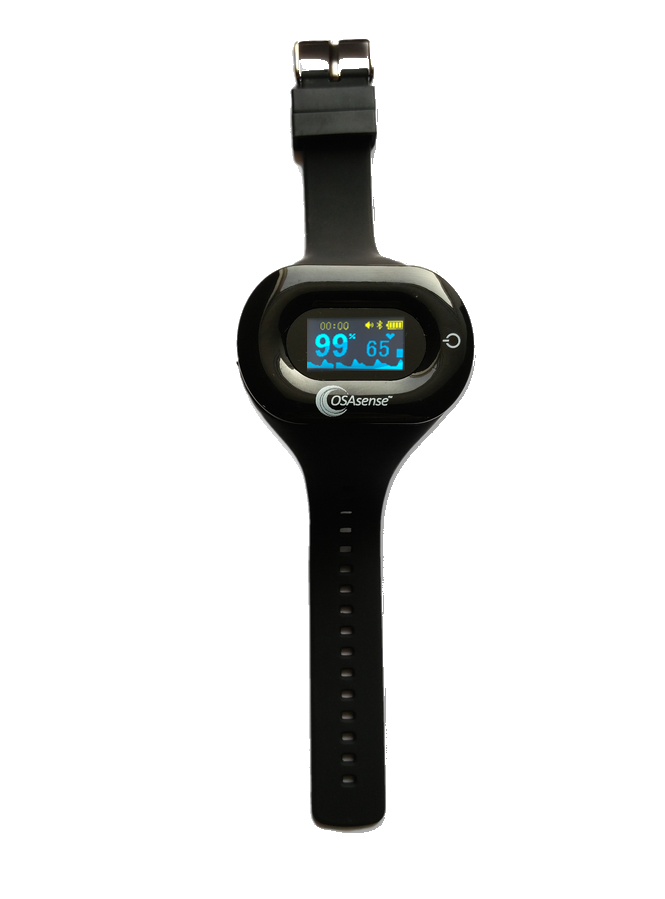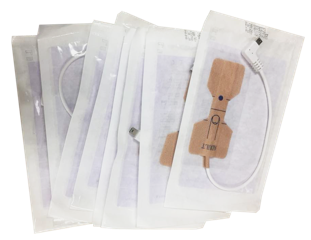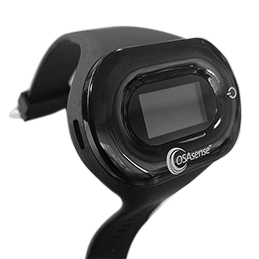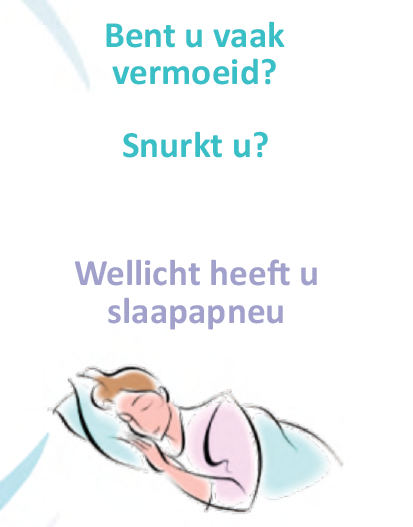Applications Scenarios
Exclusion diagnostics
OSAsense can be used by medical professionals and organisations, such as occupational and insurance physicians, who want to perform preventive diagnostics to rule out sleep apnea in high-risk populations. Preventive OSAS exclusion diagnostics can help prevent irreversible co-morbidities related to OSAS.
Case finding
OSAsense can be used as a case finding tool in patient populations under treatment for a condition at high risk for sleep apnea or sleep apnea-related comorbidity.
Measuring treatment effects
OSAsense offers a cheaper, faster and more patient-friendly alternative to measure the effect of apnea treatment.
OSAsense in practice
General Practice
GPs use OSAsense as a low-threshold tool to rule out sleep apnea when this condition is suspected. With OSAsense, GPs reduce the number of patients undergoing costly sleep studies unnecessarily and provide opportunities for the group of people who have been dealing with sleep apnea-related symptoms for years.
Currently in the Netherlands, OSAsense is currently being used in several regions as a exclusion diagnostics in primary care. Health insurance companies reimburse the use of OSAsense in this setting.
Thanks to the use of OSAsense, waiting times at sleep centers are shortening. The freed up capacity can be used more effectively for diagnostics and treatment.
Heart clinic within hospitals
The NHG's Atrial Fibrillation (AF) guideline states that research should be done on modifiable risk factors of AF, including sleep apnea. The OSAsense offers a nice low-threshold solution for this. At the Tergooi hospital, they are already successfully applying the OSAsense exclusion diagnostics, see article: "Quest for improved screening for obstructive sleep apnea in atrial fibrillation".
Occupational health physicians
Occupational physicians use OSAsense as an exclusion diagnostic to quickly and easily rule out employees for sleep apnea. As a result, faster diagnostics take place, allowing employees to receive appropriate treatment sooner. This not only promotes the recovery process, but also enables employees to return to work quickly and effectively.
Curious about the deployment of OSAsense in your region? Click here
OSA care pathway with OSAsense
Possible chain integration with OSAsense
- • Pre-selection in primary care;
- • With high suspicion of sleep apnea or other sleep disorder referral to sleep center;
- • Specialist can decide not to treat, treat immediately or initiate further diagnostics based on the intake with the patient and the OSAsense data provided.
The OSAsense screening
Night-time saturation measurement at home
This measurement is performed at the patient's home and its main purpose is to quantify nocturnal dips in oxygen saturation. For this purpose, the so-called oxygen desaturation index (ODI) is used.


Questionnaire
It has several purposes, including estimating the likelihood of sleep apnea, objectifying (semi-quantitatively) the severity of symptoms, and obtaining indications of any alternative as an explanation for the symptoms.
The advice
After completion of the questionnaire and a complete overnight pulse oximetry, an opinion/result is generated.
Patient Information
Specifications
About OSAsense
The OSAsense service consists of a validated online questionnaire and an overnight saturation measurement, also known as pulse oximetry. The pulse oximeter used is shaped like a watch and measures the percentage of oxygen in the blood during sleep. Based on the questionnaire and saturation measurement, the OSAsense algorithm is able to detect sleep apnea with a sensitivity and specificity of ~100% and >70%, respectively. When general practitioners use OSAsense before referring patients to a sleep center, there are two benefits:
- Patients with a low risk of sleep apnea do not have to go through an unnecessarily expensive and time-consuming examination.
- Patients at significant risk can be quickly and effectively referred to a sleep center for diagnosis and treatment.
Clinical validation
In December 2015, we applied for a validation study to prospectively validate the OSAsense algorithm in approximately 150 patients. The study was approved by the local Medical Ethical Review Committee (METC) and registered in the Dutch Trial-Register (NL5013/NTR5786). To fund the study, we received financial support from health insurer Menzis under the Pioneers in Healthcare Voucher (PIHC). The initial OSAsense algorithm was developed in collaboration with the sleep center of the Medisch Spectrum Twente (MST) in Enschede based on data from more than 3,500 patients.
Technology
Platform
The OSAsense platform was developed as a state-of-the-art cloud platform. We designed the development of the online platform using strict guidelines regarding security and privacy.
- Privacy: OSAsense B.V.'s information security management system is ISO27001 and NEN7510 certified.
- Compliance: The OSAsense platform uses medical devices. The hardware is certified as a Class 2b medical device and the OSAsense algorithm is a Class I medical device.
Algorithm
The data collected from the night-time saturation measurement is transmitted via a secure connection to the OSAsense platform. OSAsense uses a special algorithm that interprets and evaluates saturation and acceleration data.
- Raw-data: The OSAsense algorithm processes traditional 10Hz saturation data as well as raw plethysmography and acceleration data for higher resolution and information density.
- Artificial intelligence (AI): OSAsense uses machine learning techniques to provide increasingly accurate predictions. In addition, our AI tools make it possible to apply feature recognition in the high-frequency data to analyze and evaluate various vital parameters.
Pulse oximeter

The OSAsense-S18 pulse oximeter is designed specifically for the OSAsense service. The device is unique in the way it stores measured data. This makes it possible to screen for sleep apnea with high accuracy and opens up new possibilities for research and diagnostics.
- OSAsense certified: The OSAsense service can only be used with OSAsense-approved pulse oximeters. Currently, two commercially available meters are approved: the OSAsense S18 Pulse oximeter and the Nonin WristOx 3150.
- Raw-data: The OSAsense algorithm processes raw high-frequency plethysmography and acceleration data that can be used to make judgments about desaturations, heart rate, motion, heart rate variability, blood pressure and sleep-wake, among other things.
What we know about people with sleep apnea:




